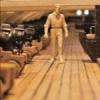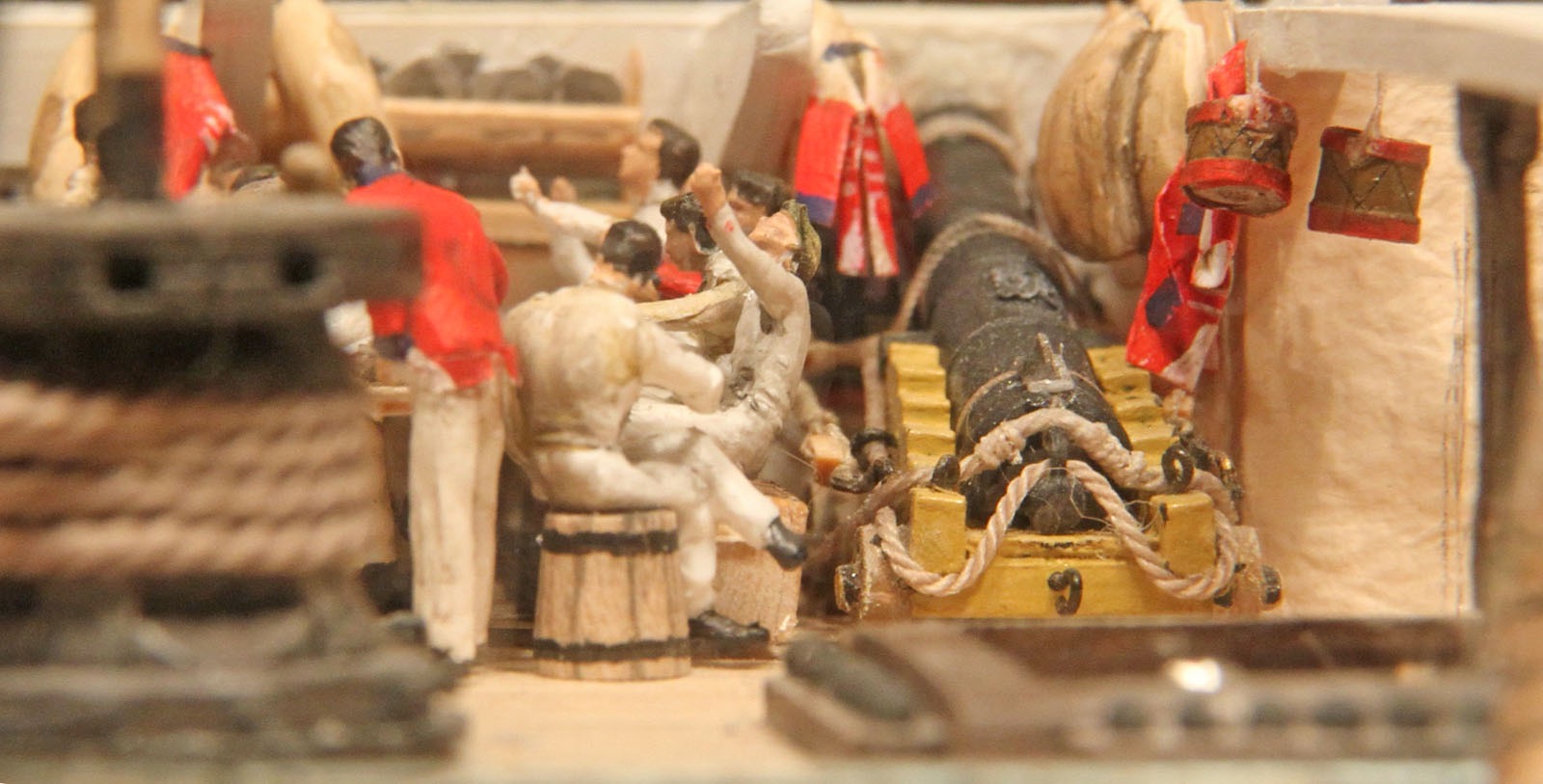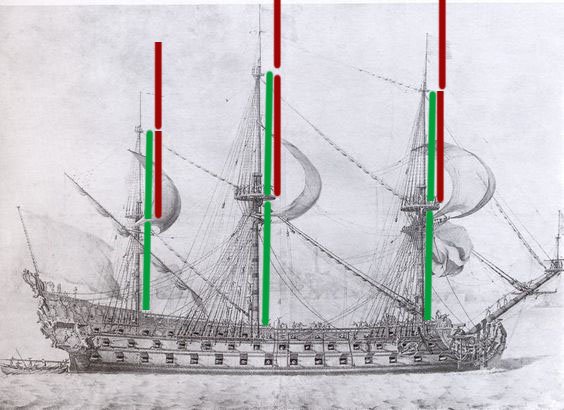-
Posts
2,417 -
Joined
-
Last visited
Content Type
Profiles
Forums
Gallery
Events
Everything posted by dafi
-
Hello Shipman,
sorry for hearing that. As my daily job is quit demanding, it is not always easy to answer as fast as i would like to do, but I really thought that I already answered all the outstanding orders. I saw the other message but can´t relate any requests with your nickname. Please send me a PM via this forum with your name and address and I will send you a copy of the wanted plate!
All the best and thank you for your message, Daniel
-
Thank you wefalck for the hint and thank you shipman for your patience. Rather difficult times at the moment with a privet move that went berserk, lots of work in the office and finally a very persiatant flue ... Things are starting to get sorted out on my side and I alreday started answering all the posts that summed up on my account. If you did not get an answer from me yet, please try here on this way to contact me. All the best and sorry for any inconveniences, cheers Daniel PS: And hell how am I looking forward to pick up my own build again!
-
Have a look for Alexander and his Anson. he is preparing a second set of plans that shows it as razé. https://modelshipworld.com/index.php?/topic/828-64-gun-ship-anson-build-in-1781-in-plymonth/&do=findComment&comment=414569 http://zope.mein-media.de/meinmedia/anson64/plans/index.html XXXDAn
-
Nice thoughts, one thing still to consider is how the top masts were set: They have to pass through the opening in the top and need to be heaved through the cap. That is impossible with the "original" set-up of the kit as I saw on my model years ago. So there is a telescopic ratio in between the single masts. The drawing in the post above respects this ratio, the topgallant mast even could be higher technically seen. Also funny to see my model of the Vic beside the one of the Soleil: The Vic has - with a bigger draught - much less high topmasts and looks much more healthy towards over all stability. XXXDAn
- 2,696 replies
-
- heller
- soleil royal
-
(and 9 more)
Tagged with:
-
Great build! "Chilling on the porch with a some and coffee. Nerves are tattered ... " better take some valerian drops, keeps the hand much more steady :-) If you havent already done all the lanyards of the deadeyes, consider taking a thinner thread. Also try out how it works for you to tie the shrouds to the lower dead eyes. If it is too hard, consider to take the lanyards off and take wooden dead eyes for the upper ones. Painted black they should fit the plastic lower ones and should be easier to handle. All the best, Daniel
-
Hello William, was nice to catch up with your build :-) For the missing side entry port - most probably the historical correct version - take the longer iron :-) Do not worry too much for the lanyards being shorter than advised. As long as you manage to do a clean build :-) Did you already try to fix the shrouds on the deadeyes the way that Heller suggests? Looks quite difficult, try already now to have enough time to find a good technic or a alternative way for that. For the broken yard take wood, resin os not a good replacement as too brittle. And for the draught marks, here is a picture of the ones of 'Royal George', sank 1782. Draught marks X, X and III. Mounted on a textile-covered board. http://collections.rmg.co.uk/collections/objects/63420.html All the best, Daniel
-
Quarter galleries: "they also afforded those officers a view of the forward sails of the ship without having to go outside" That is another statement that I would like to have contemporary evidence for. Seen that the windows glass in the wrecks are rather not clear and also the angle of viewing is not the best, the main sail hiding most of the other rigging, I have my strong doubts about that fact. Reminds me on the red color to hide the blood. Also seen that french vessels usually had mostly fake windows in the Galleries, I sometime doubt that english ships had that much glass in the back as seen on the models that had to impress the nobles for budget reasons. But that goes beyond the original marines walk ... XXXDAn
-
A companionway/ladderway always needs a bigger opening with larger distance in between the deck beams to pass ladders, sailors or even goods. A skylight can be only a part of the deck not being planked and showing the deckbeams underneath running through the opening. See for example HMS Victory for that detail. http://www.mediaharmonists.de/bilder/Sammler29/Victory-161113_2569.jpg XXXDAn
-

Rigging lines located inside of shrouds?
dafi replied to Mickgee's topic in Masting, rigging and sails
Finished yes, but only as a slice :-) But there are actually 7 or 8 lines behind the shrouds, and as mentioned above these are different halyards, sheets, bunt lines, clue lines and tricing lines placed according to McKay´s rigging plan of the foremast in AOTS of HMS Victory. Also all thicknesses are conform. The shroud trucks that are empty are the ones for ropes of the stun´sails, which are taken down if these sails are not set. XXXDAn -

Rigging lines located inside of shrouds?
dafi replied to Mickgee's topic in Masting, rigging and sails
Here is an excerpt from my Victory: And then came a nice summer bouquet of assorted halyards, sheets, bunt lines, clue lines and tricing lines in a rich assortment of thicknesses. Some clamps still free for the stun´sail´s rigging XXXDAn -
Just discovered: wonderful build! Not because you used etch, but because you are doing a great job! Cheers, Daniel
-
Finally finished the step. Small tip in between: If all sides are stabilised with CA, one can cut 0,25 slices with the resin saw from a wooden 4 mm batten :-) What that for? For the sheaves in the mast :-) And that brings us back on the track. Foretop and fore topmast done. And here compared with the "original" Especially the wrong angle is corrected :-) And the new detailing. The cheat in the heel is corrected, sheaves and a decent lock are fitted and the cap is made smaller, as it was the same size as the main cap. XXXDAn
-
After doing the maintop, just wanted to smarten up the foretop to make some castings, as I still need several of them for some tests ;-) Then realised that my standards improved since the top was first done. So when trying to dissemble the top it proved not a useful base any more, so a fresh construction was a must - at least for me. Perhaps one remembers earlier posts. The top Heller supplies is quite ok, just an old version, that was only used until 1802 (and displayed on all models I know since the 1920ies). An admiral order from 1802 states to fit a top of two halves on big ships, as they are easier to replace. As the Vic was rigged in 1803 and could be considered as a big ship, so I dared fitting one, better saying two halves ;-) Based on Lees and other sources, there should be sleepers on the top of the top with half the thickness of the crosstrees, reinforcements on the rim and a different scheme for the battens. So got the Heller top naked, reinscribed the planking and fitted the missing bits and made new and slimmer holes for the irons. To cut the crosstrees and the sleepers, I used a vice and with a single cut it was done. And then a small orgy with Evergreen and the new top was done and a bit more crisp than the old version :-) Anyway, Heller keeps surprises me, as on the "original" top the complicated planking scheme, with up- and downside looking different, was faithfully done :-) XXXDAn
-
Hello Thomas most of the figures date from mid 2015, see here for an example Film Crew @Jason, for the rest, nothing is decided yet :-) And Dave, no need to be sorry, that is one of the companion ways, situated in the middle. XXXDAn
-
Something I always wanted to tell: A small portion of the upper deck laid, and one sees much better how claustrophobic the situation was ... Ashes to ashes, earth to earth and top to tops ... ... business as usual. XXXDAn
-
Anyway, they are not too bad as they still had different proportions than the guns in later years. The pictures of the original guns recovered show a much slimmer barrel than the ones on the Vic. https://www.ouest-france.fr/pays-de-la-loire/la-baule-44500/le-canon-du-soleil-royal-sinstalle-passage-de-la-ladure-1190342 https://www.google.de/imgres?imgurl=http%3A%2F%2Fi34.servimg.com%2Fu%2Ff34%2F15%2F24%2F95%2F84%2Fcanond11.jpg&imgrefurl=http%3A%2F%2Fmodelisme-naval-bois.lebonforum.com%2Ft138p50-soleil-royal-1669-au-1-72&docid=ObKeddvYMMpN1M&tbnid=qJdCqDfY3UwBqM%3A&vet=10ahUKEwjy_InlrdrWAhUiDJoKHTb-D0UQMwg3KBIwEg..i&w=800&h=531&bih=789&biw=1440&q=soleil royal cannon&ved=0ahUKEwjy_InlrdrWAhUiDJoKHTb-D0UQMwg3KBIwEg&iact=mrc&uact=8 XXXDAn
-
Hy Marc, the barrels from Victory are the original ones from the kit, just some etch added. The Heller kit often surprises me, as many parts are quite close to the original. Most actions necessary come from the limitations in making the moulds some 40 to 50 years ago. Here is a link to the instructions of the etch parts that deal with the guns: http://www.dafinismus.de/bilder/Platinen_ab_2015/Etch_Victory_en_5_V12.pdf http://www.dafinismus.de/bilder/Platinen_ab_2015/Etch_Victory_en_4_V12.pdf http://www.dafinismus.de/bilder/Platinen_ab_2015/Etch_Victory_en_7_V12.pdf But even the Soleil guns look much better if some simple modifications are done: replace the trunnions and the axels and bore the hole for the breech into the carriages´sides. In the back the original, in the front the pimped version. ]
-
You got it Jason :-) But not only while being hoisted, also once the topmast is in place, there is nothing else that helps counteracting the weight, as the topmast is not linked/fixed to the main cap. XXXDAn
-
Bolsters for the yard sling in the back and 2 for the lift blocks in the front :-) XXXDan
About us
Modelshipworld - Advancing Ship Modeling through Research
SSL Secured
Your security is important for us so this Website is SSL-Secured
NRG Mailing Address
Nautical Research Guild
237 South Lincoln Street
Westmont IL, 60559-1917
Model Ship World ® and the MSW logo are Registered Trademarks, and belong to the Nautical Research Guild (United States Patent and Trademark Office: No. 6,929,264 & No. 6,929,274, registered Dec. 20, 2022)
Helpful Links
About the NRG
If you enjoy building ship models that are historically accurate as well as beautiful, then The Nautical Research Guild (NRG) is just right for you.
The Guild is a non-profit educational organization whose mission is to “Advance Ship Modeling Through Research”. We provide support to our members in their efforts to raise the quality of their model ships.
The Nautical Research Guild has published our world-renowned quarterly magazine, The Nautical Research Journal, since 1955. The pages of the Journal are full of articles by accomplished ship modelers who show you how they create those exquisite details on their models, and by maritime historians who show you the correct details to build. The Journal is available in both print and digital editions. Go to the NRG web site (www.thenrg.org) to download a complimentary digital copy of the Journal. The NRG also publishes plan sets, books and compilations of back issues of the Journal and the former Ships in Scale and Model Ship Builder magazines.



